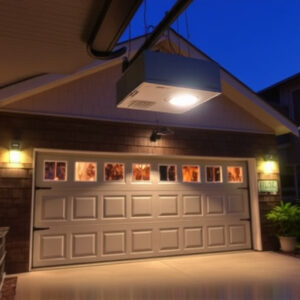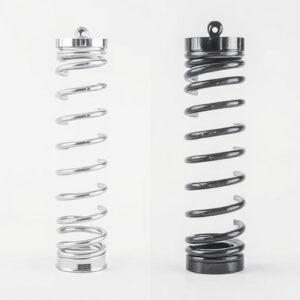Resolving GE Dryer Heating Glitches A Step By Step Guide For Austin Residents
To keep your GE refrigerator functioning optimally, regularly clean the interior with gentle solutio…….

To keep your GE refrigerator functioning optimally, regularly clean the interior with gentle solutions and sanitize the fridge coils every few months using a soft brush or vacuum to maintain heat transfer and energy efficiency. Inspect door seals periodically to ensure they're tight, as loose or worn seals can cause energy loss. Maintain the appliance's levelness to prevent door-related performance issues. Replace water and ice dispenser filters regularly to preserve water quality and the unit's functionality. Adhering to these maintenance practices can help extend your refrigerator's lifespan and ensure it runs effectively.
For troubleshooting common cooling problems, start by checking the temperature setting, clean door seals, and ensure the interior light isn't causing overdraw. If there's excessive frost on the evaporator coils, trigger the defrost cycle or clean the coils. If the refrigerator isn't cooling with everything connected and powered properly, inspect the power supply, check the condenser coils for dust, and consult the user manual or GE customer service if necessary.
Advanced maintenance includes calibrating the thermostat for energy efficiency and ideal temperature settings, fine-tuning moisture controls to prevent frost, and regularly checking door seals for wear. Cleaning the condenser coils is also crucial for heat transfer efficiency and to prevent strain on the refrigerator, thus prolonging its operational life.
Maintaining your GE refrigerator ensures it operates at peak efficiency, safeguarding your food’s freshness and preserving a clean, hygienic environment. This article delves into the essential maintenance practices tailored for GE fridges, from regular cleaning to addressing common issues. We’ll also explore advanced strategies that contribute to optimal performance, allowing you to enjoy the longest lifespan possible from your appliance. With these tips at your fingertips, you can uphold the health and longevity of your refrigerator with ease.
- Regular Cleaning and Care for GE Refrigerators
- Troubleshooting Common Issues in GE Fridges
- Advanced Maintenance Strategies for Optimal Performance
Regular Cleaning and Care for GE Refrigerators

Regular cleaning and care are pivotal in maintaining the efficiency and longevity of your GE refrigerator. To keep the interior fresh, regularly wipe down shelves and drawers with a gentle cleanser or a mixture of warm water and baking soda. Avoid using harsh chemicals that can damage surfaces or leave residues that might affect food taste. Additionally, the coils at the back or bottom of your GE refrigerator should be cleaned every few months to ensure optimal performance. Use a soft brush or vacuum cleaner with a crevice tool to remove dust and debris, which can impede heat transfer and cause the fridge to work harder than necessary. This not only helps in maintaining consistent temperatures but also saves energy and prolongs the lifespan of your appliance.
Inspecting door seals regularly is another critical aspect of GE refrigerator maintenance. A loose or worn seal can lead to poor performance and increased energy consumption. To test the seal, close the door over a piece of paper and try to pull it out without opening the door. If the paper comes out easily, the seal may need adjustment or replacement by a professional. Furthermore, ensure that your GE refrigerator is level to prevent any doors from sticking or not closing properly, which can affect its performance and efficiency. Regularly monitoring the water and ice dispenser filters is also advisable, as clogged filters can compromise the quality of dispensed water and ice, and potentially damage the dispenser mechanism. Keeping up with these maintenance tasks will help ensure that your GE refrigerator operates smoothly and maintains a consistent temperature for your perishables.
Troubleshooting Common Issues in GE Fridges

When encountering common issues with GE refrigerators, a systematic approach to troubleshooting can often resolve the problem efficiently. If your GE fridge is not cooling properly, begin by checking the temperature setting on the control panel; inadvertently adjusting it to a warmer setting can cause this issue. Ensure that the door seals are clean and free of debris as well; compromised seals can prevent proper door closure, leading to improper temperature maintenance. Another frequent concern is excessive frost buildup on the evaporator coils. This can be addressed by using the defrost cycle manually if it’s not functioning automatically. Regularly cleaning the coils with a soft brush or vacuum can help maintain optimal performance.
Should your refrigerator be operating but not cooling at all, first inspect the power cord and outlet to confirm that it is indeed plugged in and receiving power. Additionally, verify that the interior light isn’t set to ‘On’ during operation, as this can draw sufficient power to prevent proper cooling. If the fridge still fails to cool, check the condenser coils located at the back or bottom of the unit for dust accumulation; a buildup can restrict airflow and reduce efficiency. In such cases, a thorough cleaning of the coils with a soft brush or a coil-cleaning solution can restore functionality. If these steps do not resolve the issue, it may be necessary to consult the user manual or contact GE customer service for further assistance or potential repair. Regular maintenance and prompt troubleshooting can extend the lifespan of your GE refrigerator and ensure it operates at peak performance.
Advanced Maintenance Strategies for Optimal Performance

1. To maintain optimal performance from your GE refrigerator, it’s beneficial to adopt advanced maintenance strategies that go beyond routine cleaning and checking. Regularly monitoring the temperature settings can prevent either overworking the unit in an attempt to maintain a cold environment or allowing it to function less efficiently at higher temperatures. Calibration of the thermostat ensures the fridge and freezer operate within their designed parameters, which is crucial for energy efficiency and longevity. Additionally, understanding and adjusting the moisture settings can enhance food preservation while reducing the likelihood of frost buildup, a common issue that affects performance.
2. Beyond the basics, it’s advisable to inspect the door seals regularly. Over time, these seals can become brittle or compressed, leading to poor sealing and inefficient operation. A simple visual check for any signs of wear or damage, followed by a test to ensure airtight closure, can prevent significant energy loss and improve the refrigerator’s performance. Similarly, keeping the condenser coils clean is a strategy often overlooked but highly impactful. Accumulated dust and debris on these coils impede heat transfer, causing the fridge to work harder and consume more electricity. Regular cleaning of the coils, usually found at the back or bottom of the unit, can keep your GE refrigerator running efficiently, thus extending its lifespan and ensuring it operates as intended.
maintenance of GE refrigerators is a crucial aspect to ensure their longevity and effectiveness. Regular cleaning, timely troubleshooting of common issues, and adherence to advanced maintenance strategies are key components that contribute to optimal performance. By following the guidelines outlined in this article, your GE refrigerator will remain a dependable and efficient appliance for years to come. Remember to perform routine checks and cleanings, address problems promptly, and keep abreast of maintenance techniques tailored for your specific model. With proper care, your GE fridge will continue to serve as a vital part of your kitchen, maintaining the freshness of your food and supporting your daily needs with reliability.







